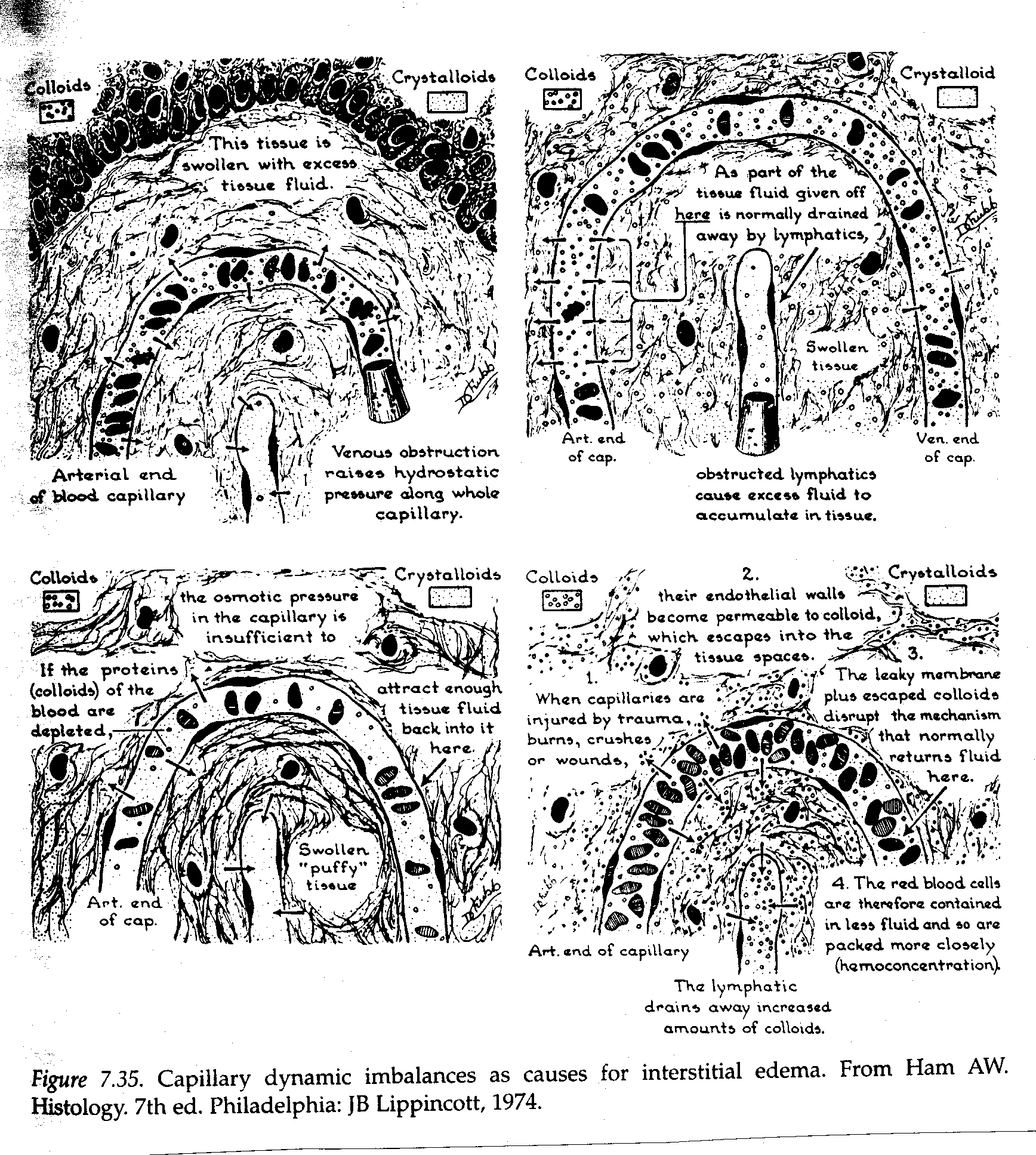The Cardiovascular System
ANS 215
Anatomy and Physiology of Domestic Animals
- Structure and Function
- Heart is a cone-shaped, hollow, muscular structure located in the thorax.
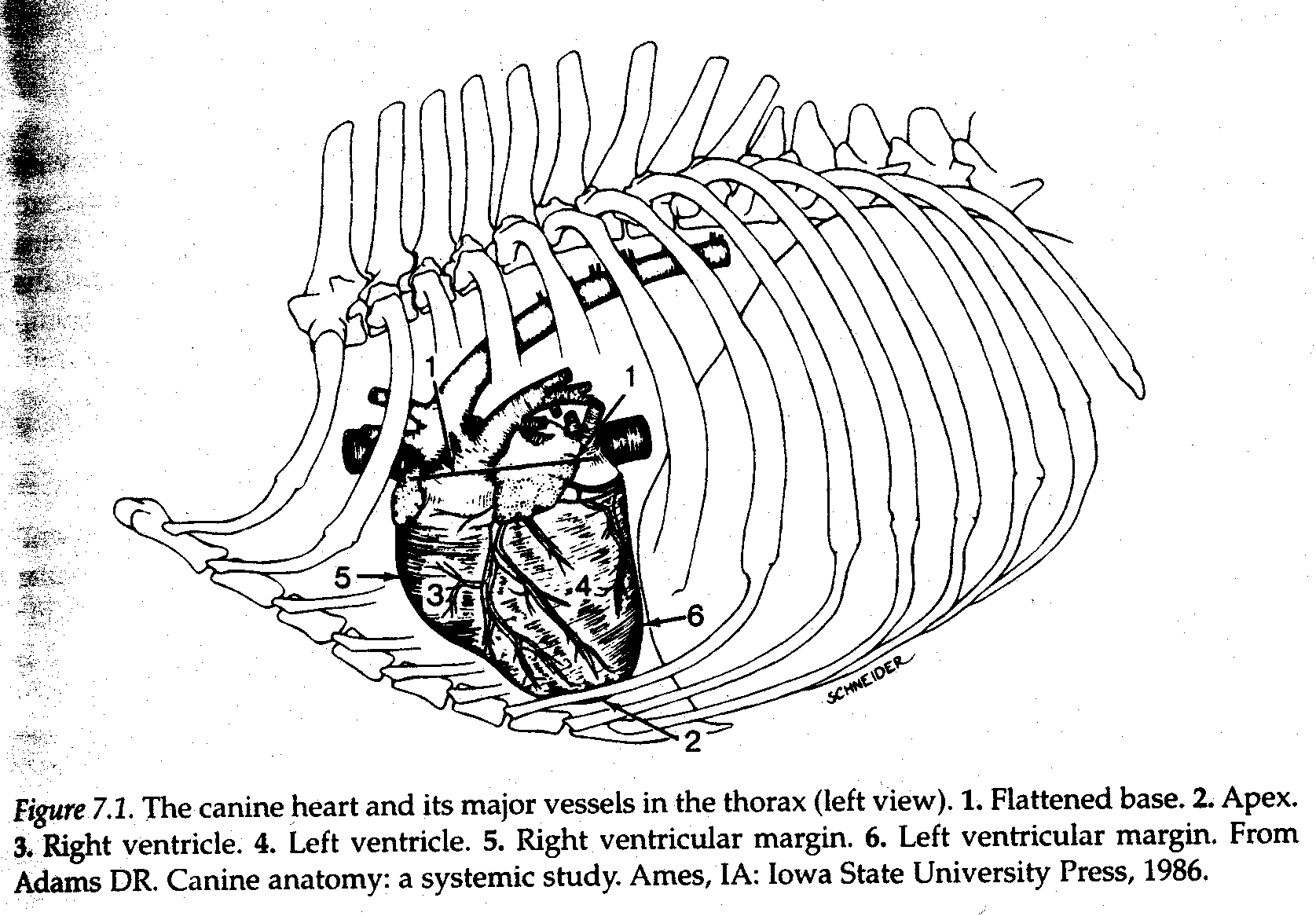
- Large arteries and veins are continuous with the heart at its base.
- Base is directed upward (dorsal) and forward (cranial).
- Opposite end of the cone is known as the apex
- Membrane around the heart is known as the pericardium
- Membrane next to hear fuses with the heart muscle and is called the visceral pericardium or epicardium
- Outer membrane is parietal pericardium
- Apex is free
- Inflammation of the pericardium is called pericarditis
- increase in fluid in pericardium
- traumatic pericarditis (hardware) disease in cattle
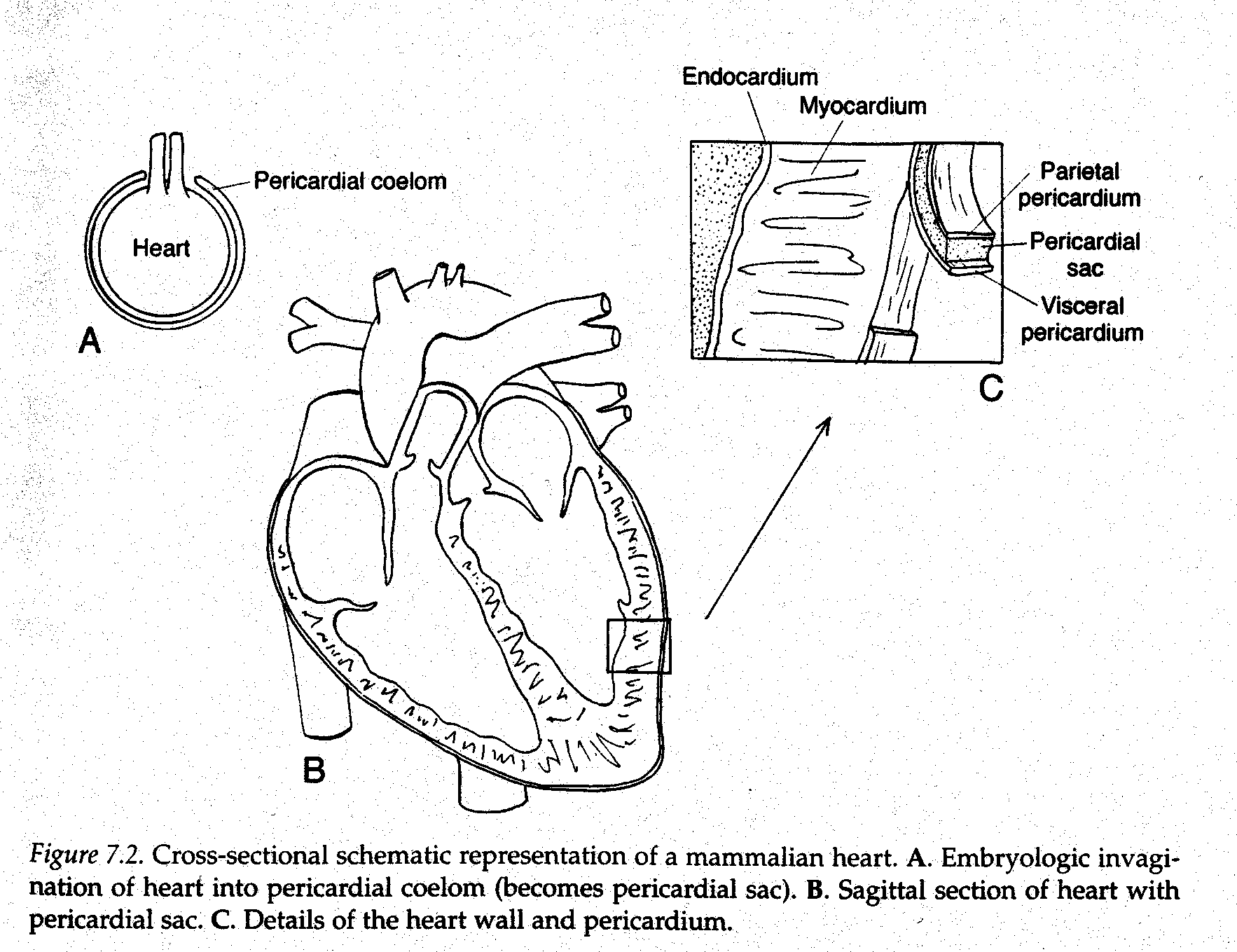
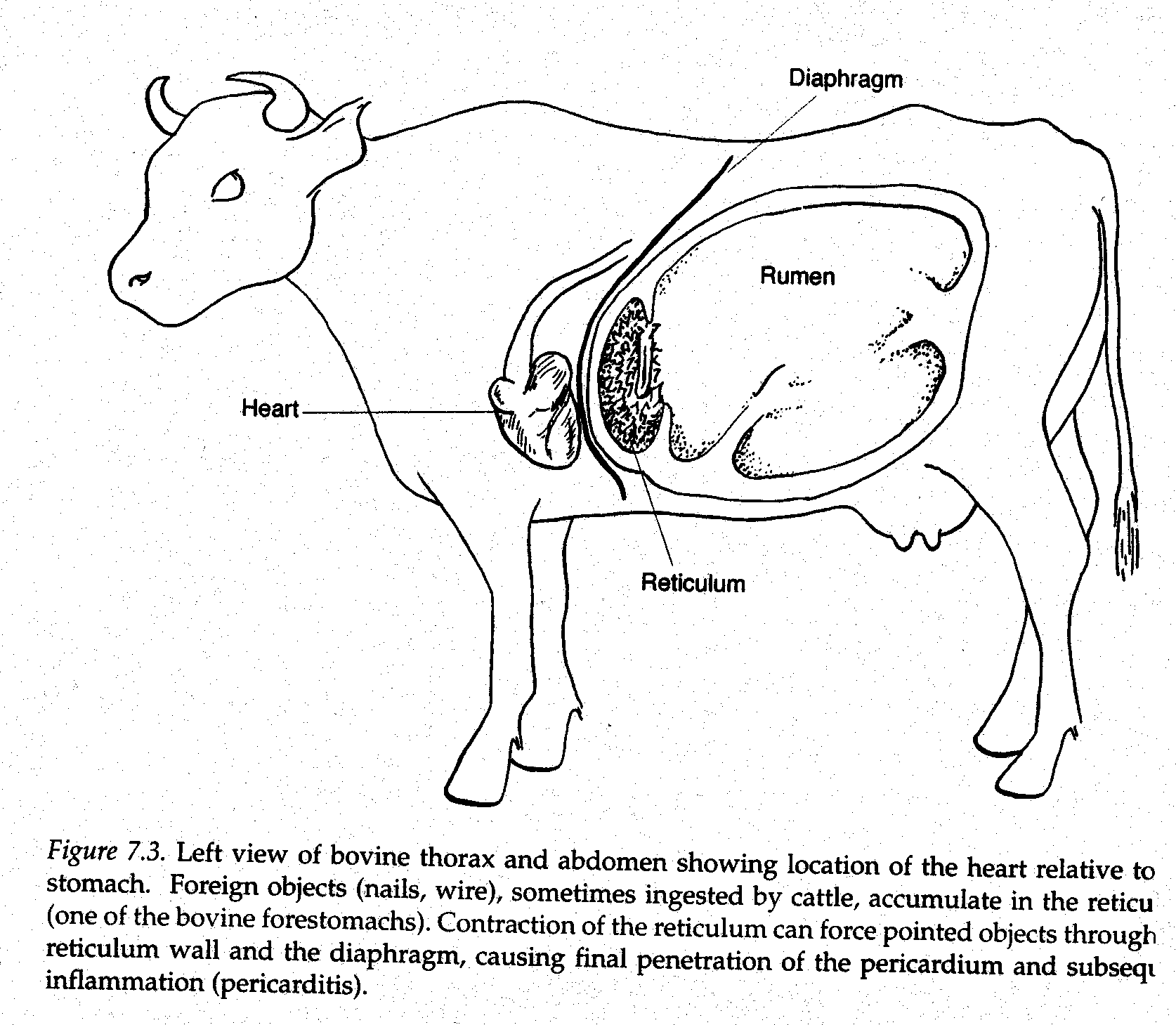
- Mycardium
- Muscular Part of the heart which forms the walls for the chambers.
- Heart chambers (4) divided into left and right side of the heart
a. Each side has an atrium and ventricle and
each atrium has an extension known as the
auricle
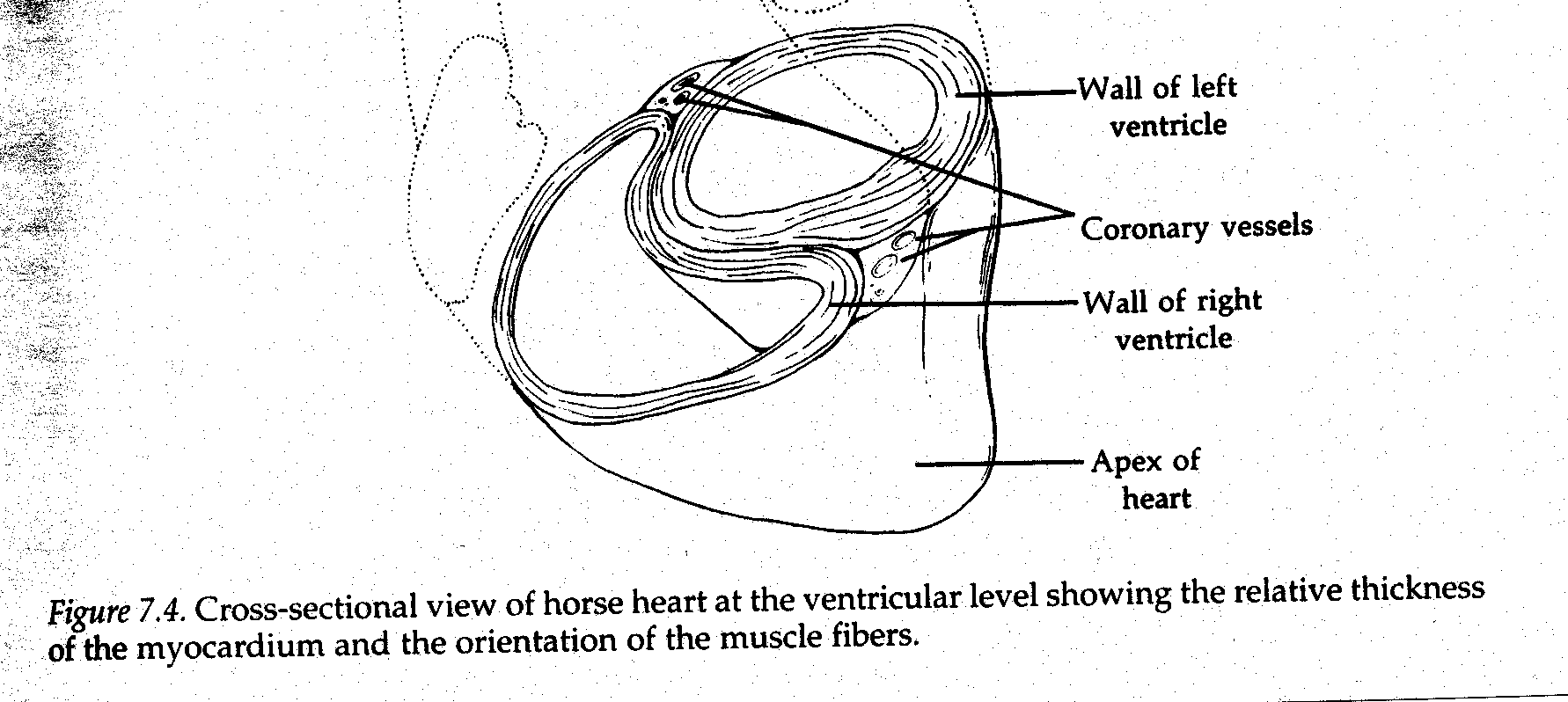

- Atria receive blood from veins and ventricles receive
blood from atria.
- Heart Valves
- Valves located between the atria and ventricles are known as the atrioventricular (A-V) valves.
- valve on right side has 3 cusps (tricuspid)
- vakve on left side has 2 cusps (bicuspid)
- A-V valves prevent backflow of blood into atria when ventricle
Contracts
- Eversion of valves into atrium is prevented by cords
(chordae tendineae) attached to free margin of cusps and to small muscles (papillary muscles) at heart wall
- Semilunar valves prevent backflow of blood into ventricles
Following contraction.
- Each have 3 cusps
- Valve on right side is pulmonary semilunar
- Valve on left side is aortic semilunar
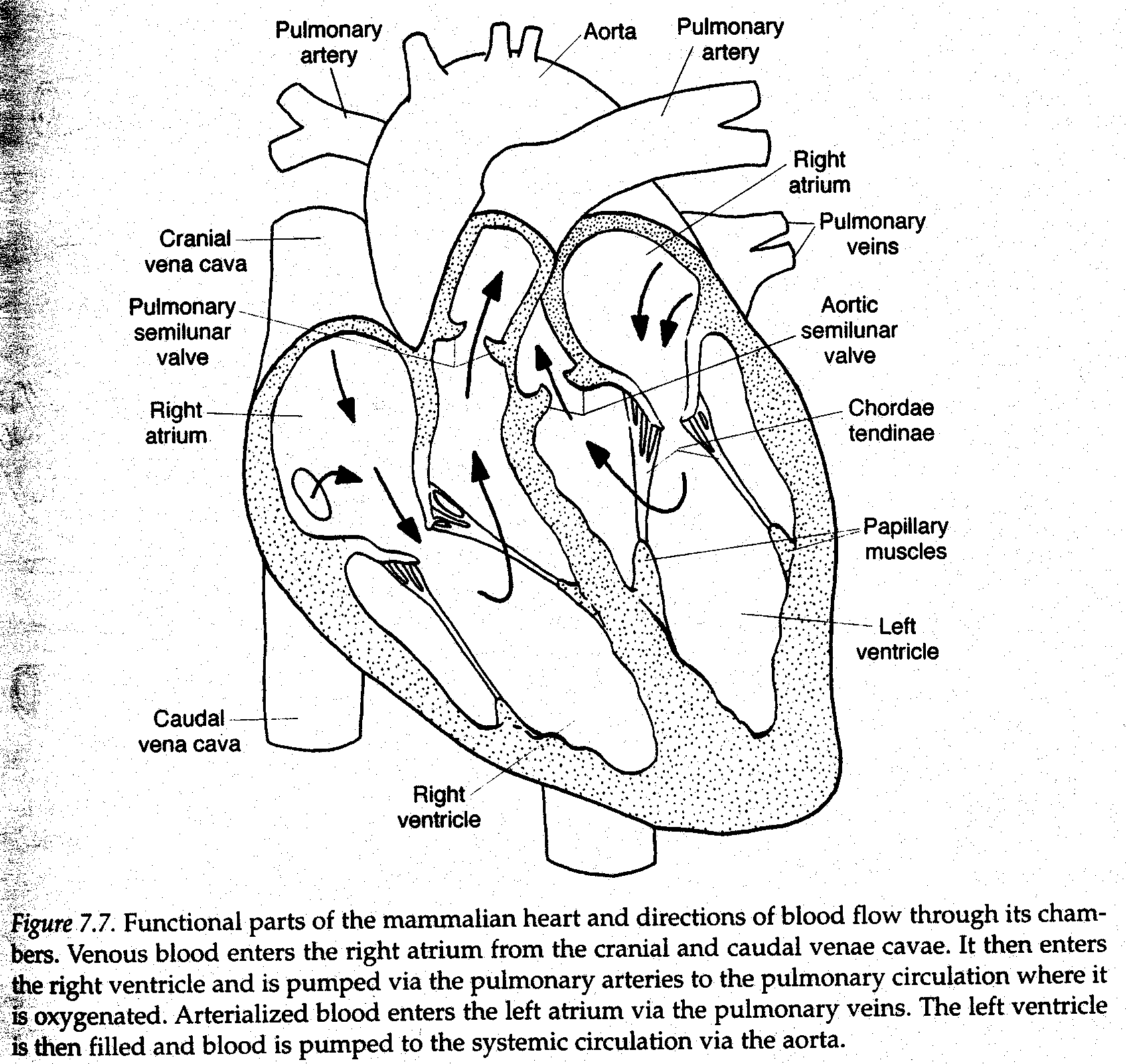
- Blood Flow Through the Heart
- Blood that circulates to the tissues returns to the heart by the cranial vena cava(forward parts of body) and caudal vena cava (blood from rear parts of body).
- Venous blood enters the right atrium during the atrial relaxation phase of the cardiac cycle and is then directed through the tricuspid valve to the right ventricle.
- Ventricles then contract and the blood is pumped through the pulmonary semilunar valves to pulmonary arteries and lungs
- After circulation through the lungs the blood enters the left atrium via the pulmonary veins.
- Blood (now oxygenated) is directed to the left ventricle where it is pumped throughout the body through aorta.
- Blood Vessels
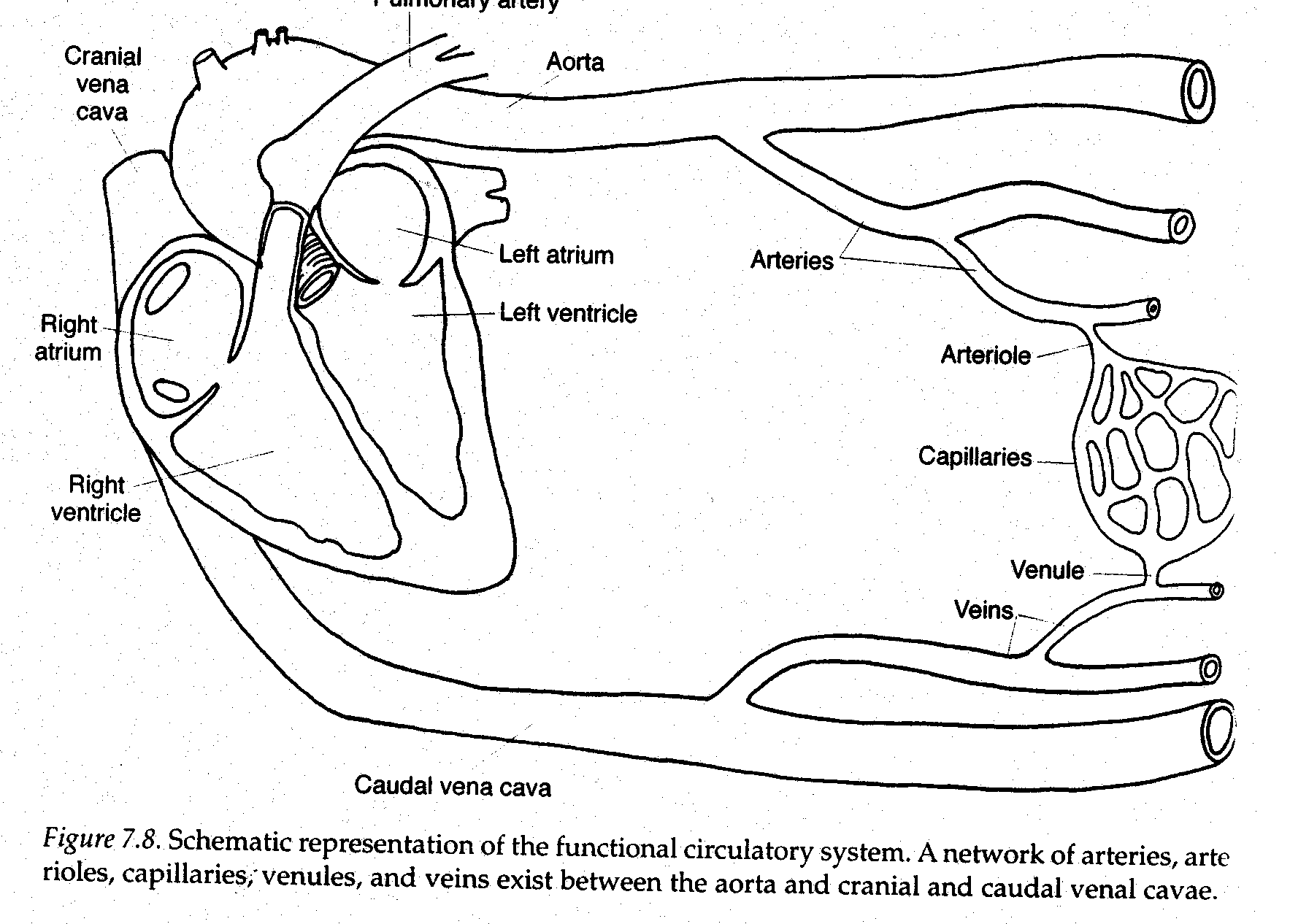
- Inner aspect of the pericardium is described as the outer cell layer of the heart and is known as epicardium
- Middle layer of heart is cardiac muscle
- Inner layer of heart is endocardium which is continuous with the endothelium of all blood vessels.
- endothelial cells are single-layerd squamous epithelium
- inflammation of endocardium is endocarditis
- inflammation of heart valve is valvular endocarditis.
- Blood vessels provide for a continuous route for blood leaving
The heart to return to the heart.
- arteries, arterioles, capillaries, venules, veins
- arteries more elastic
- small arteries have some portion of elastic tissue replaced by smooth muscle-helps to regulate blood flow to capillary beds
- Capillaries are merely endothelial tubes
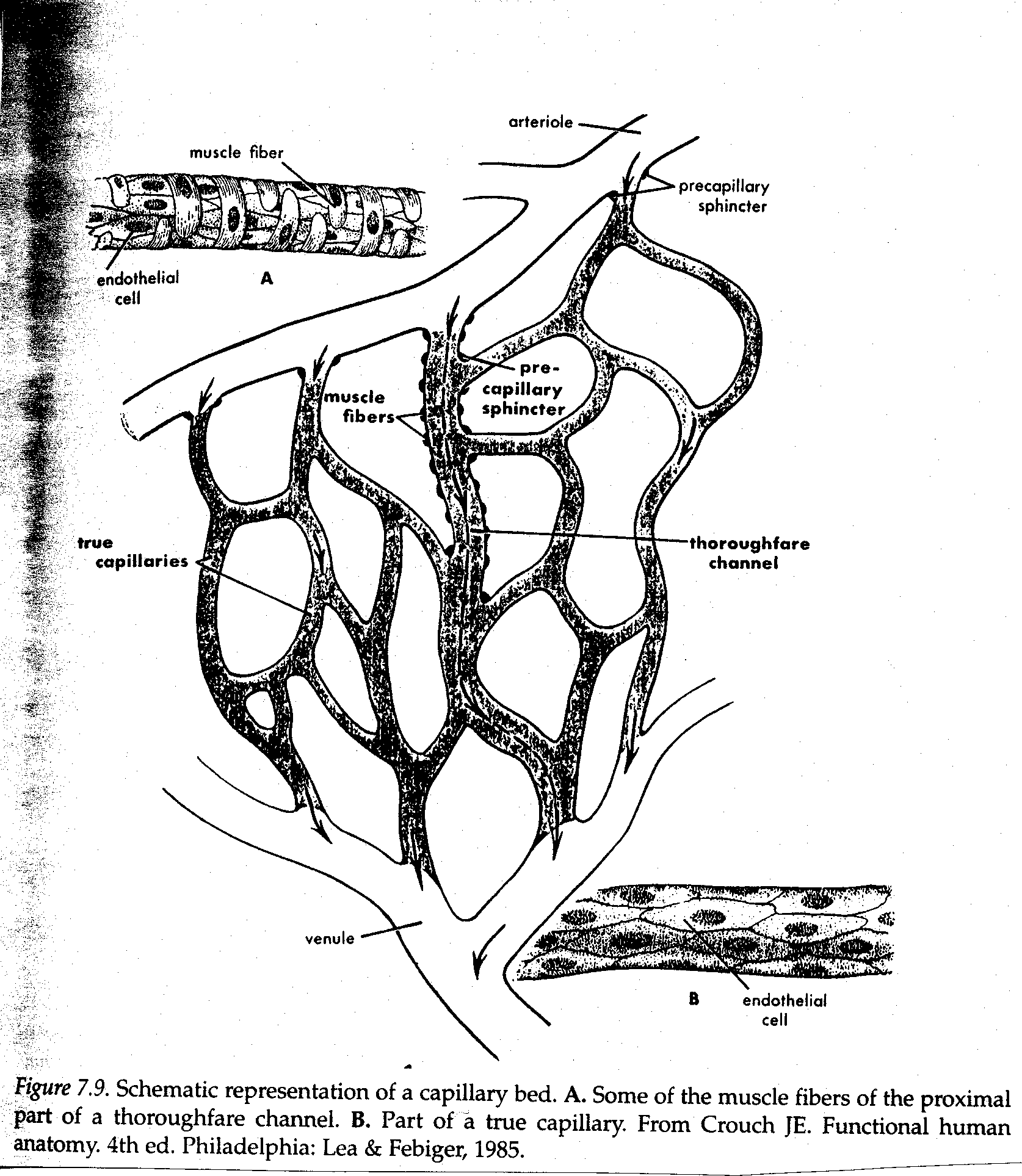
- Where endothelial cells border each other, a thin slit
(slit pore) or intracellular cleft is provided for diffusion of dissolved substances from plasma.
- Pinocytotic vesicles are also present in the
Endothelial cells for nutrient transfer
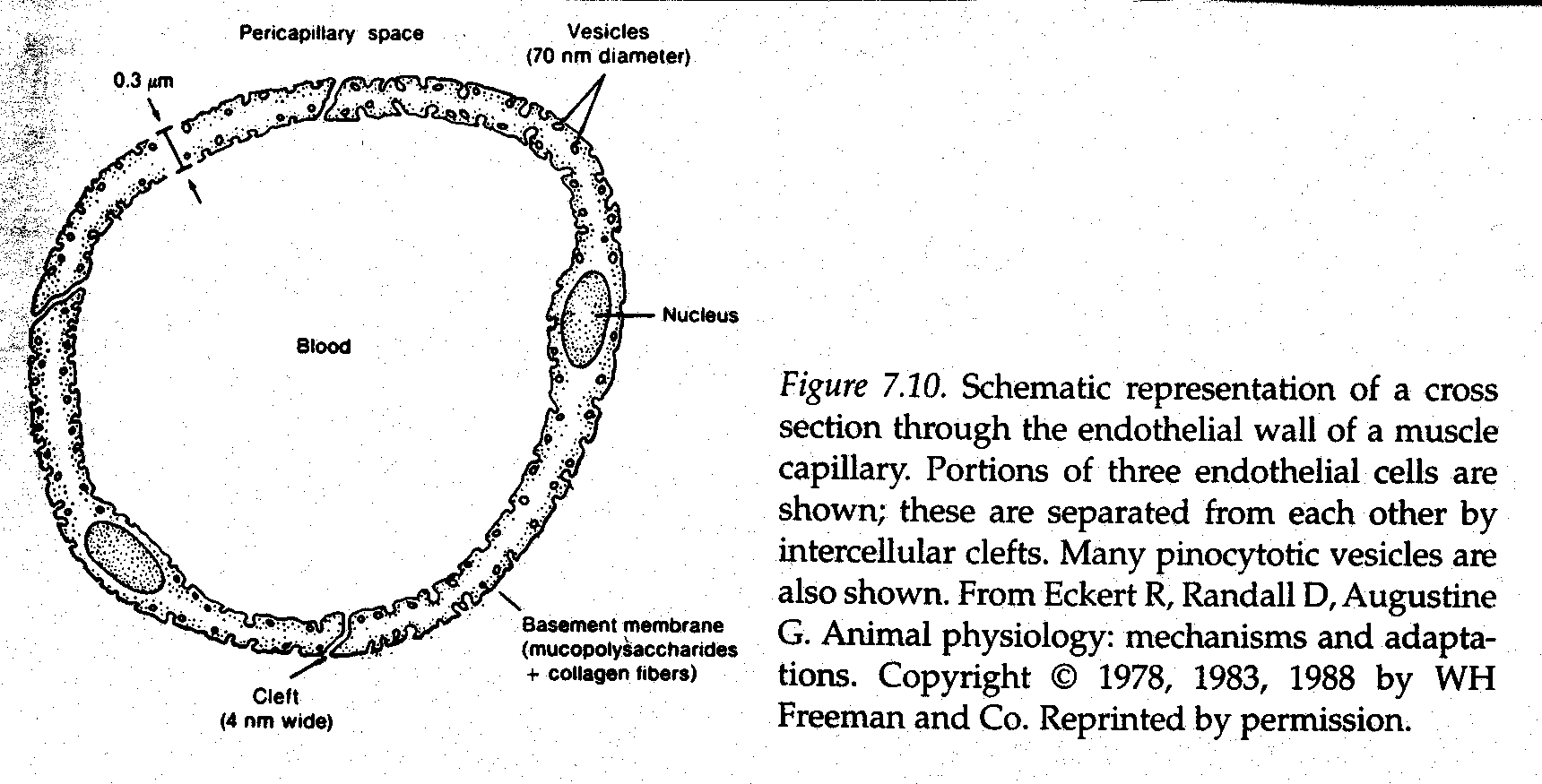
- Veins are thin-walled tubes reinforced by connective
Tissue. They also contain some smooth muscle fibers
- Valves are present in the veins at irregular intervals
that are directed towards the heart – prevents backflow
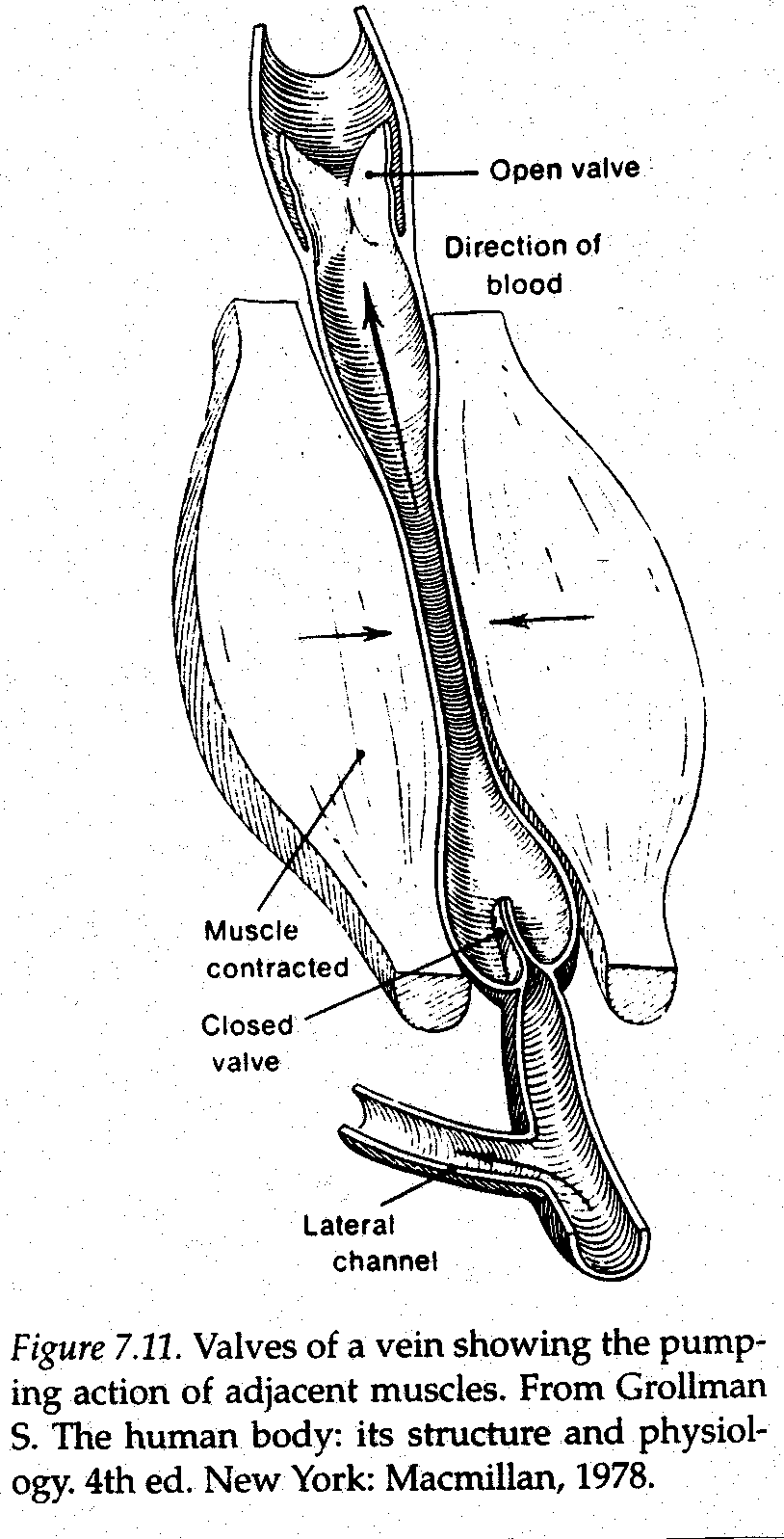
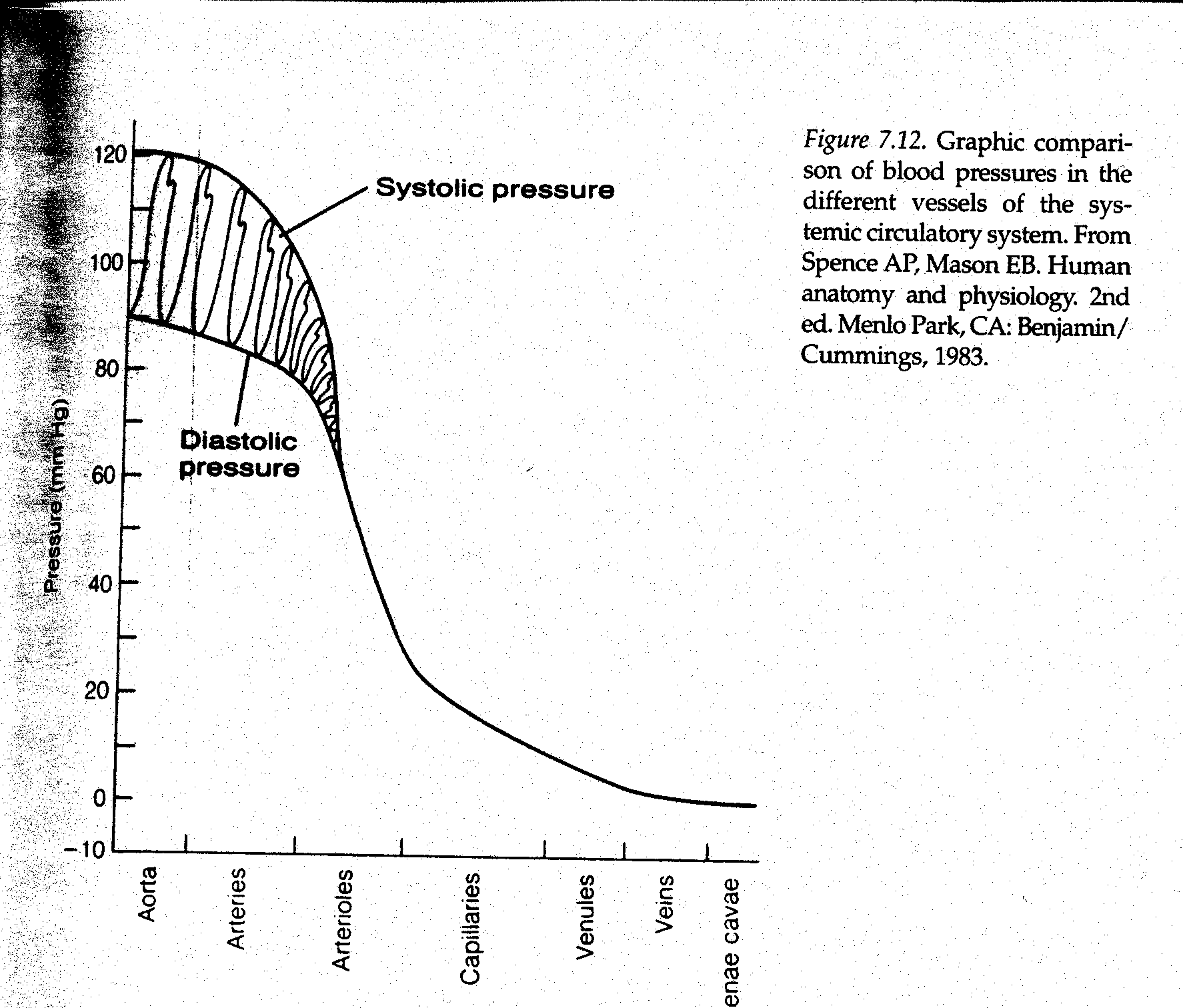
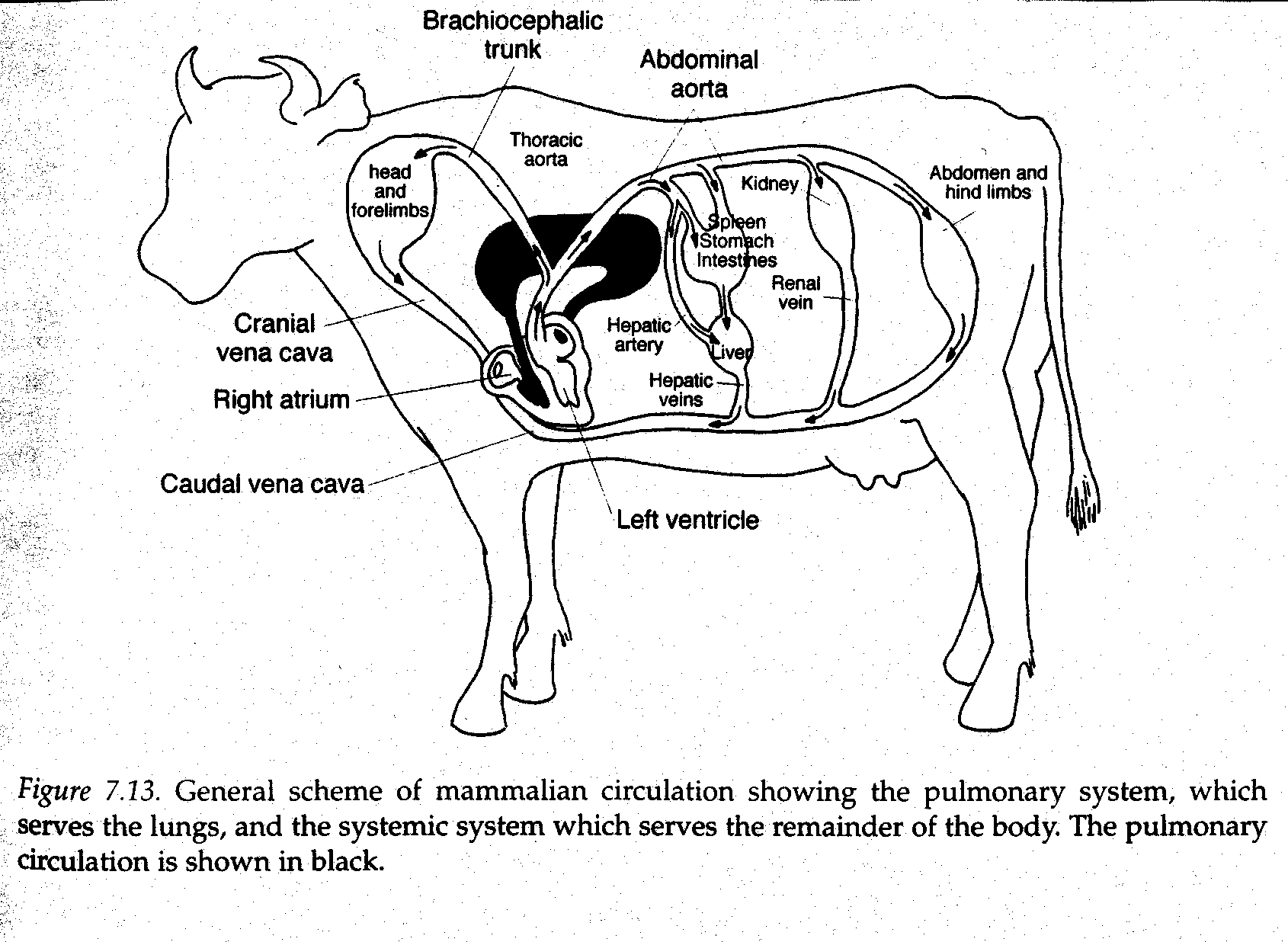
- Blood Circulatory Systems
- Pulmonary
- Circulates blood through the lungs
- Pressure for this system originates in the right ventricle
- Capillaries for this system lie in pulmonary alveoli
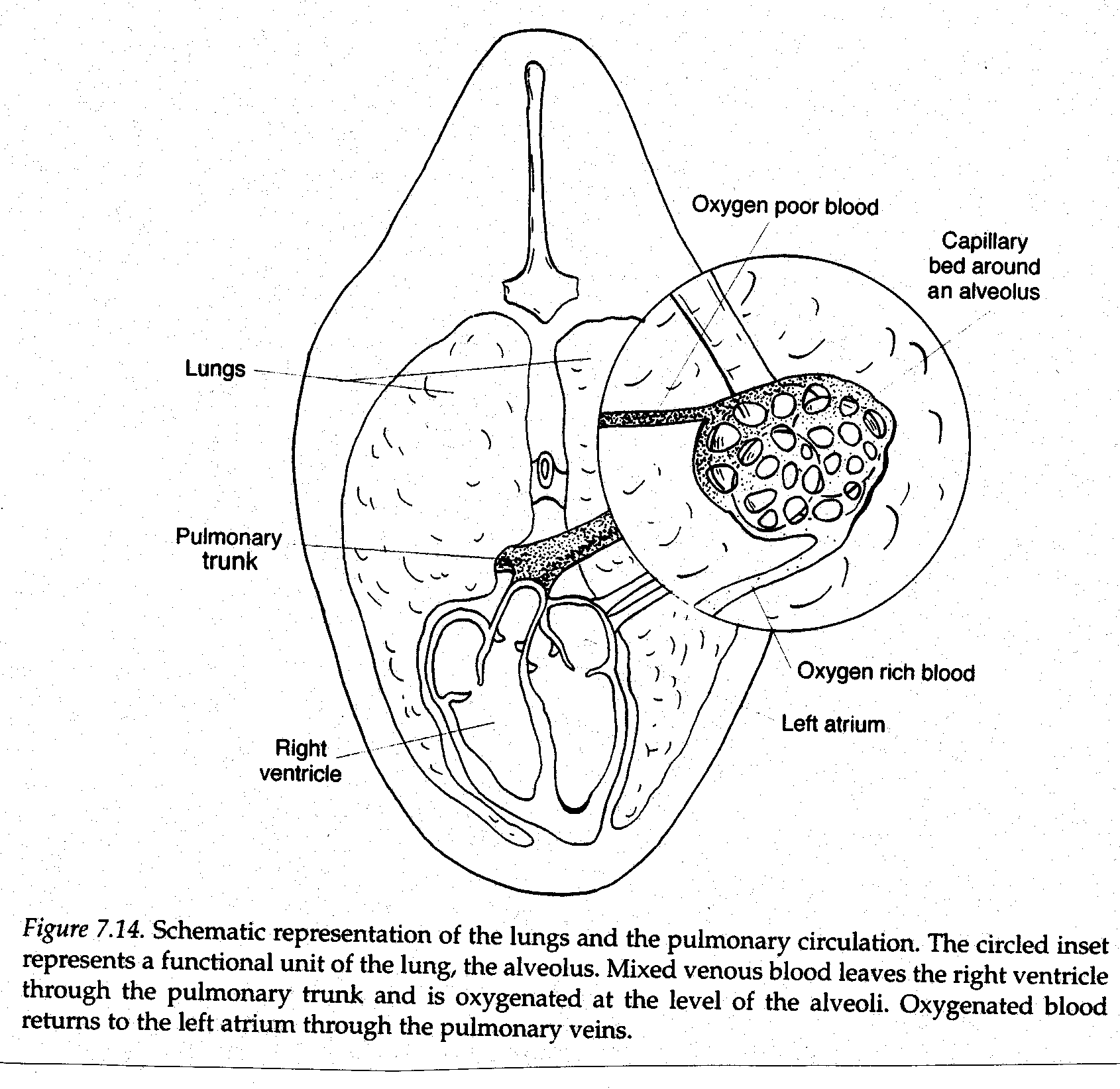
- Systemic circulation
- Carries blood that has returned from the lungs.
- Pressure for this system orginates in the left ventricle
- Blood traversing this system leaves the left ventricle through the aorta and is returned to the right atrium via the venae cavae.
- First branches of aorta supply heart muscle through coronary arteries.
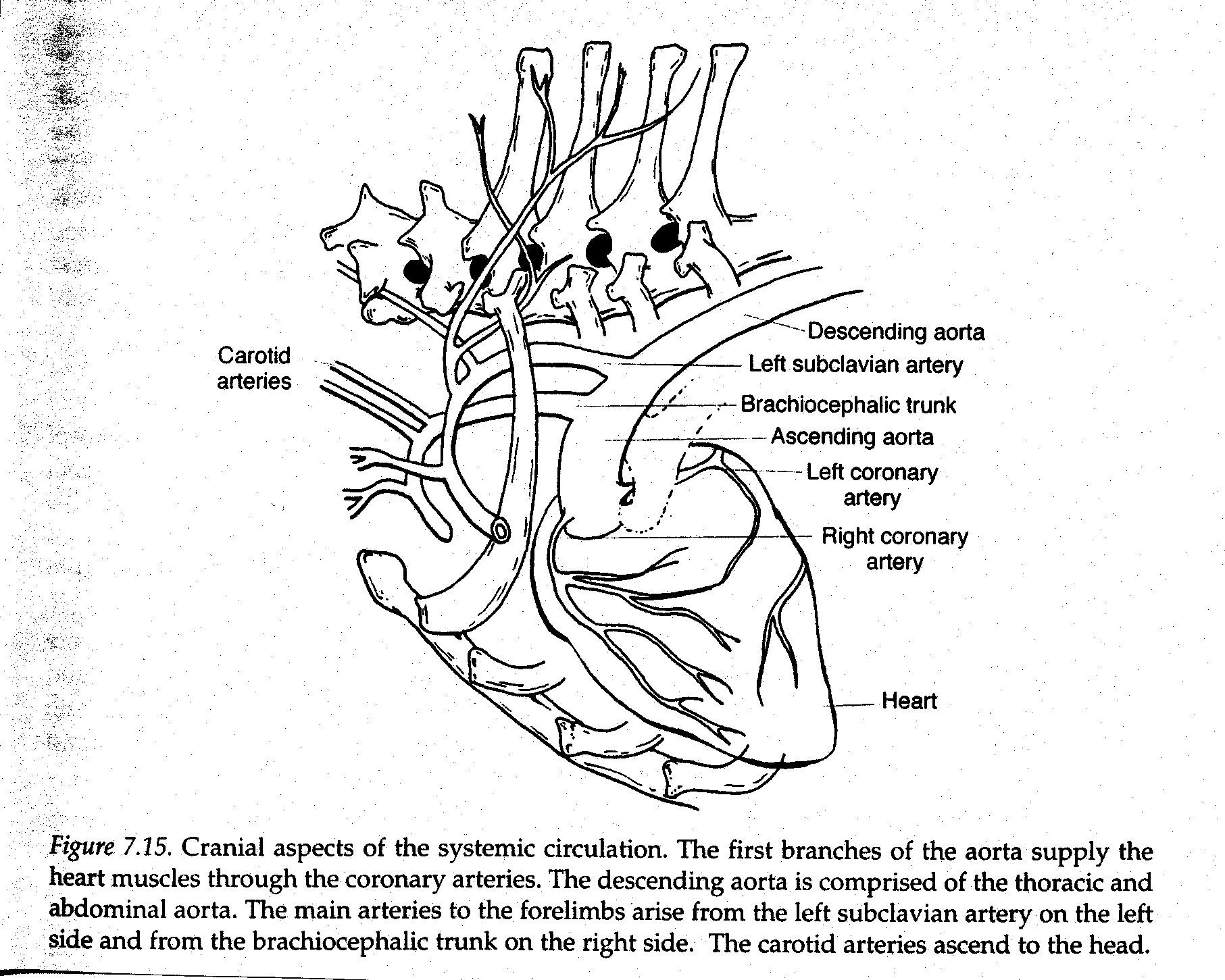
- Within the systemic circulation are a few portal systems.
- Vein heading to the heart rebranches to form a capillary bed which reunite to form veins.
- Primary example is the hepatic portal system
- Veins draining viscera all empty into the liver which reforms a capillary bed (liver sinusoids)
- This portal system permits uptake of nutrients from digestive tract at the liver for metabolism and transport to other tissues.
- Also permits cleansing of blood or the removal of harmful substances (detoxification).
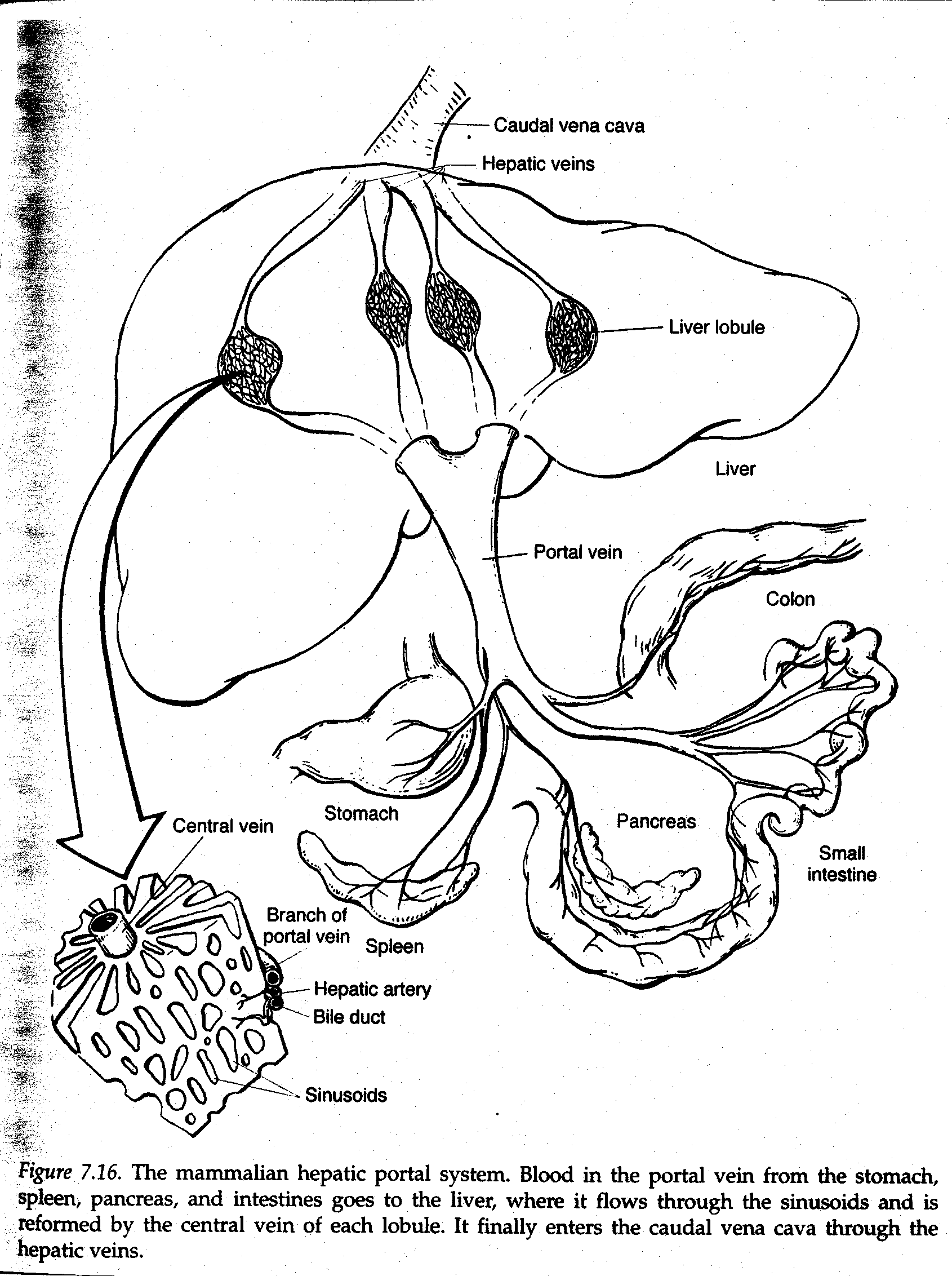
- Lymphatic System
- Important adjunct to the circulatory system
- Lymphatic vessels have blind beginnings in the interstitial spaces
- Continuation vessels of the lymphatic system tend to parallel veins.
- Lymph vessels join with each other and eventually form a few large lymph vessels that empty directly into large veins.
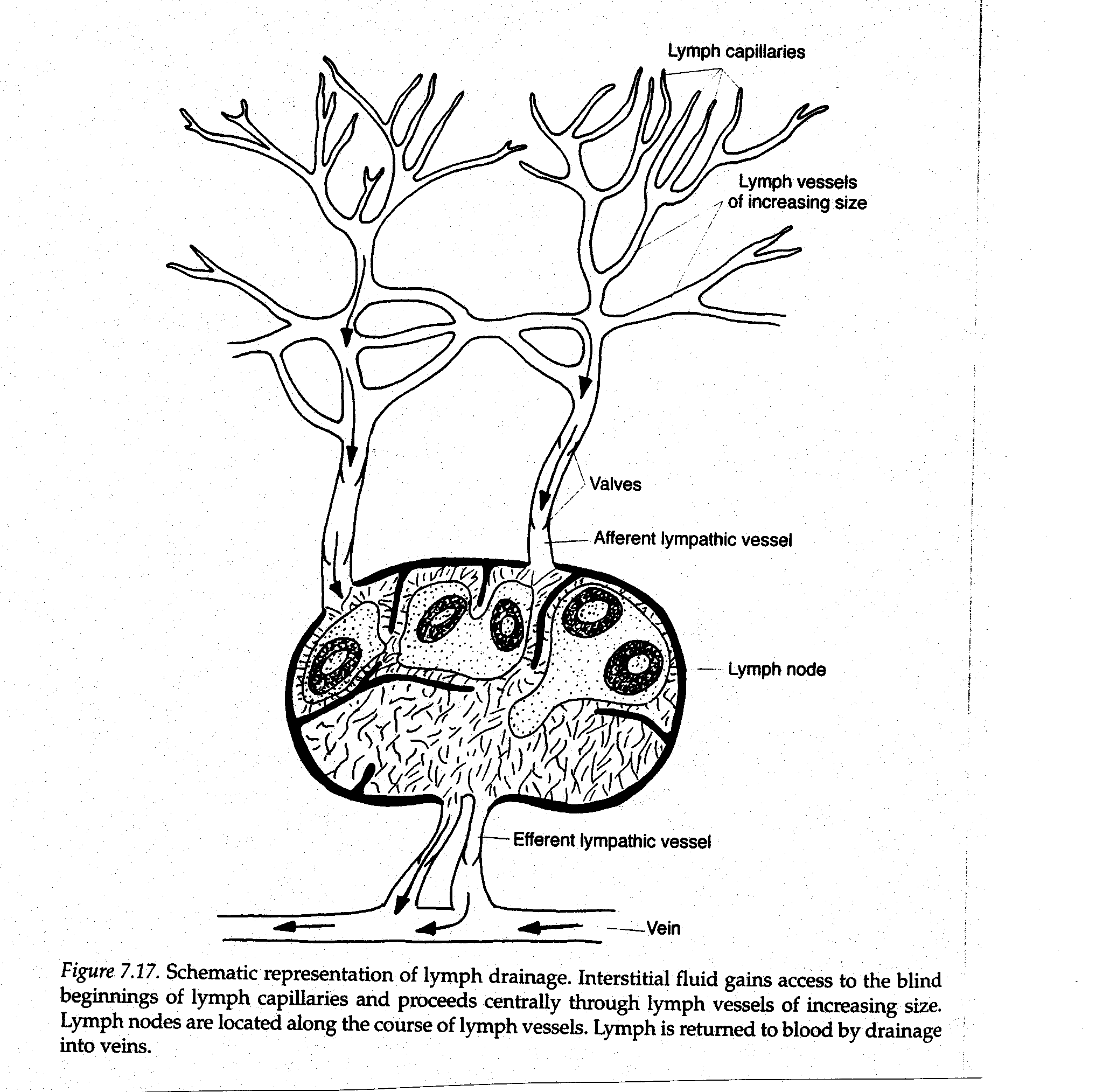
- Fluid of lymph vessels is called lymph
- Very close in composition to interstitial fluid
- Protein in interstitial space can only return to plasma via lymph
- 100% of plasma protein is turned over every 24 hours
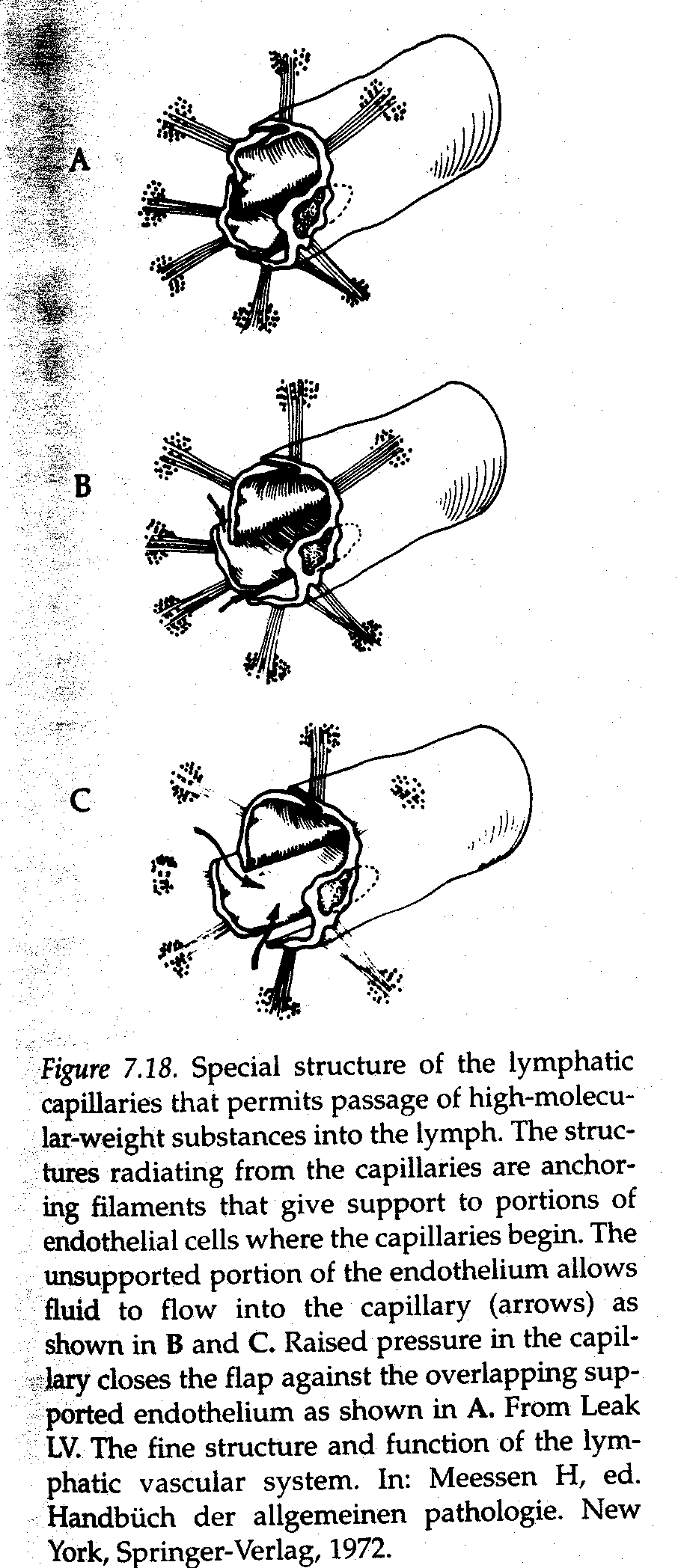
- Blind beginnings of lymph vessels are adapted for the intake of
Large molecules. (see above)
` G. Lymph nodes are nodular structures of varying size located along the
course of lymph vessels.
- Contain clusters of germ cells that divide to form
Lymphocytes.
- Also contain fixed populations of macrophages
- Attach and digest foreign substances
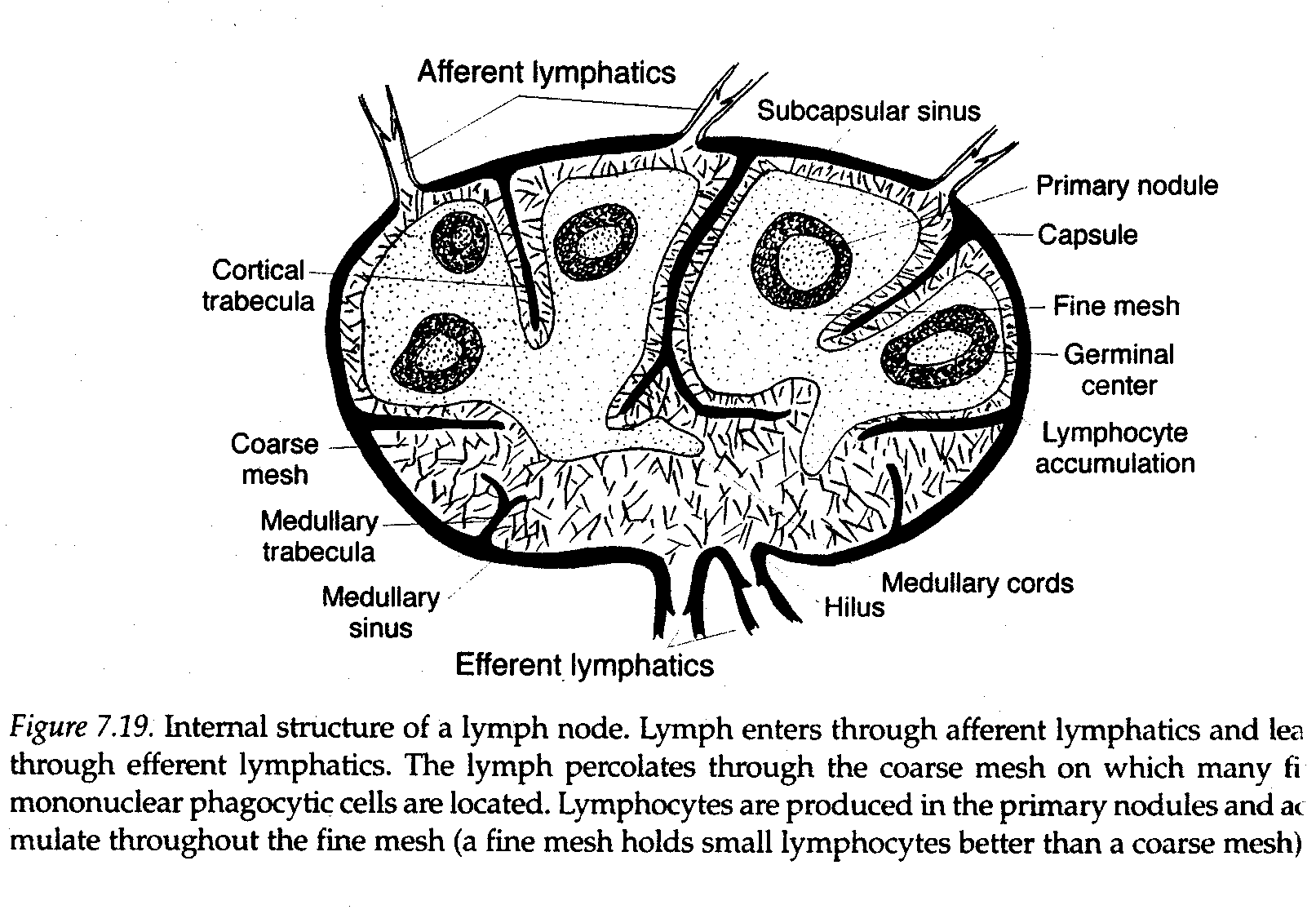
- Spleen
- Largest lymphoid organ of the body
- Circulating fluid is blood instead of lymph
- Only organ specialized to filter blood
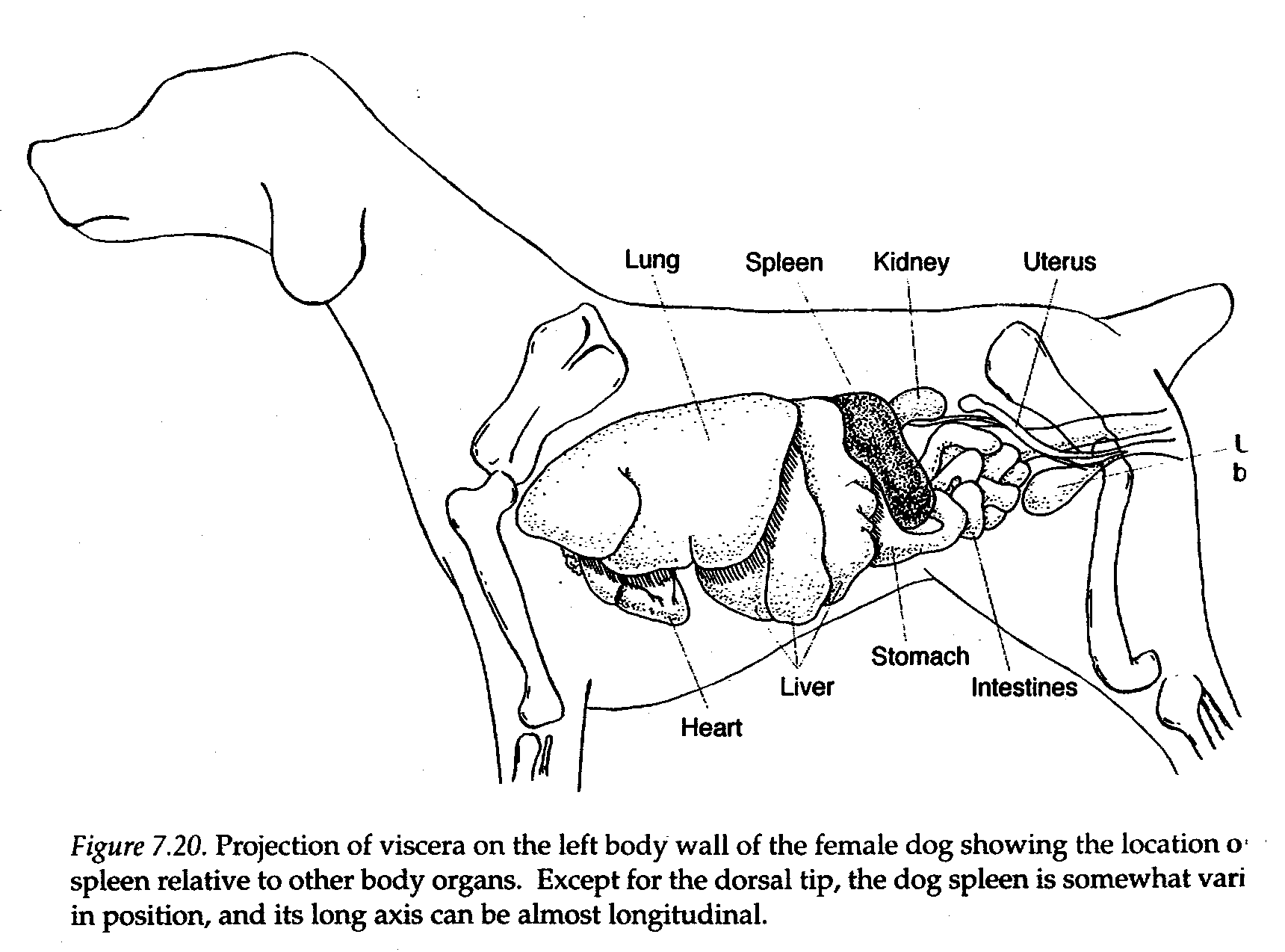
- Spleen outside covering is called the capsule
- Contains connective tissue and smooth muscle
- Smooth muscle is pronounced in carnivores
- Trabeculae extend from the capsule
- composed of elstic fibers, collagen and smooth muscle
- Arteries, veins, lymph vessels and nerves are contained within the trabeculae.
- Parenchyma of the spleen is comprised of red and white pulp
And is supported by trabeculae and blood vessels.
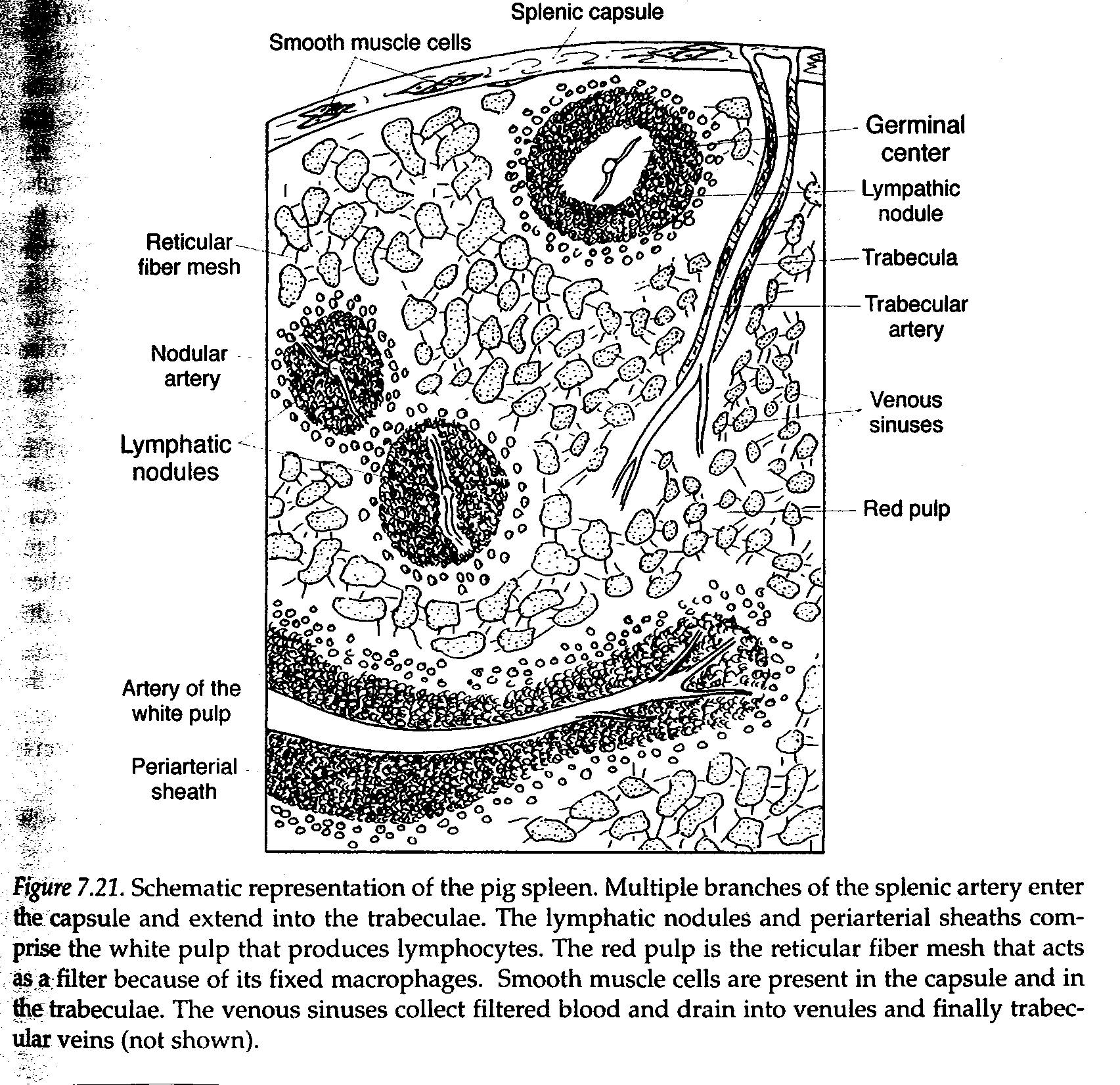
- Most of the pulp is red because of the blood that is being
Filtered and contains fixed macrophages.
- The white pulp is lymphoid tissue that is distributed
Throughout the spleen and which produces lymphocytes.
- Spleen is site of red blood cell removal, reservoir of red cells
Lymphocytes.
- Cardiac Contractility
- Origin of the heartbeat
- All muscles have inherent rhythmicity of contraction
- Frequency of contraction is greatest in cardiac muscle
- Atria muscle cells have higher frequency of contraction than ventricular cells.
- Small area (S-A- node) near junction of cranial vena cava and right atrium has higher frequency of contraction than atria.
- This is location of origination of cardiac contraction.
- Specialized muscle fibers send out impules which spread throughout the musculature of the atria.
- Serves a pacemaker function.
- Conduction of the Impulse
- Muscles of the atria and those of the ventricles are arranged to form an atrial and ventricular syncytium.
- syncytium is an arrangement of muscle fibers in which the fibers fuse to form an interconnected mass of fibers.
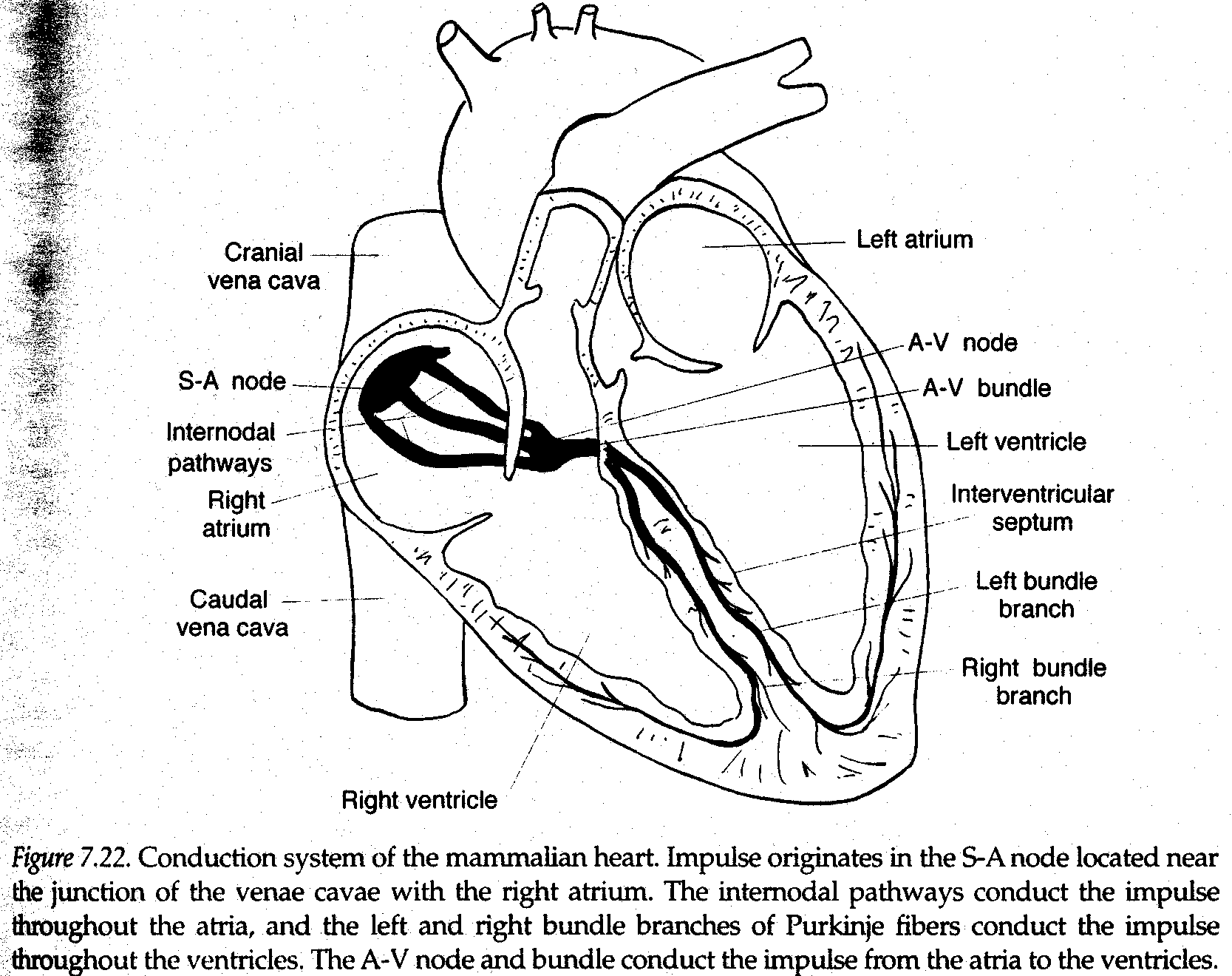
- The atrial syncytium is separated from the ventricular
Syncytium by a fibrous ring that surrounds the A-V valves.
- Fibrous ring acts as an insulator between the two
Syncytia
- Impulse that spreads throughout the atria does not
Spread to the ventricles.
3. Permits independent contraction.
- To facilitate conduction of the impulse from the S-A node and
Coordinate contraction the heart has a specilialized conduction tract.
- Purkinje fibers join to form internodal pathways
- transmission of impulses and subsequent depolarization is facilitated by intercalated discs interposed between muscle fibers.
- Impulse conduction by internodal pathways is received by the A-V node which is located at a point between the atria and ventricles/
- A-V node is continued throughout the A-V ring by the A-V bundle.
- A-V bundle fibers are smaller in diameter than other Purkinjee fibers which slows impulse down and allows emptying of atria before contraction of ventricles.
- Conduction fibers are continued from the A-V bundle in the wall dividing to form the right and left bundle branches to supply the right and left ventricles.
- Cardiac muscle contracts more slowly than skeletal muscle and the refractory period is longer.
- Both atria contract at the same time and both ventricles contract at the same time.
- Contraction of muscle fibers within a syncytis is synchronized.
- Defibrillation causes simultaneous depolarization of all
Cardiac muscle fibers. This permits initiation of a new cycle with impulses that begin at the S-A node.
- Cardiac Cycle
- Refers to the sequence of events that occurs during one complete heartbeat.
- Events are continuous and the assigned periods are arbitrary for descriptive purposes
- Diastole refers to relaxation of a heart chamber before and during filling of the chamber
- Systole refers to contraction of a heart chamber in the process of emptying.
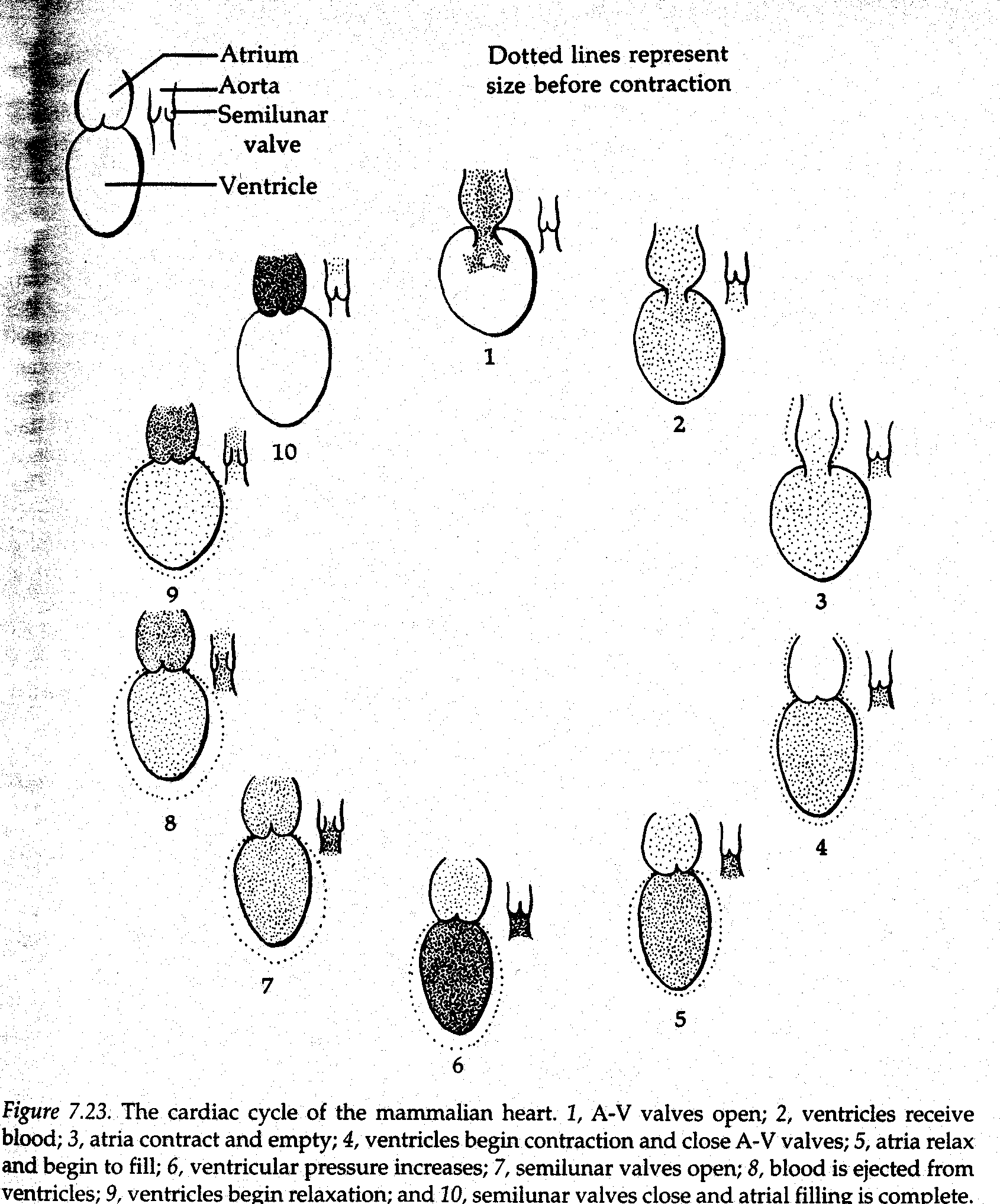
- Electrocardiogram (ECG)
- Record of voltage changes which occurs across the nerve and muscle membranes during waves of depolarization and repolarization.
- Connection of the amplifier with wires (leads) to selected body parts (usually the limbs) and to a recorder proves a characteristic wave form.
- Recording of electrical activity of the heart.
- ECG is altered when heart muscle is damaged or ventricle walls are thickened.
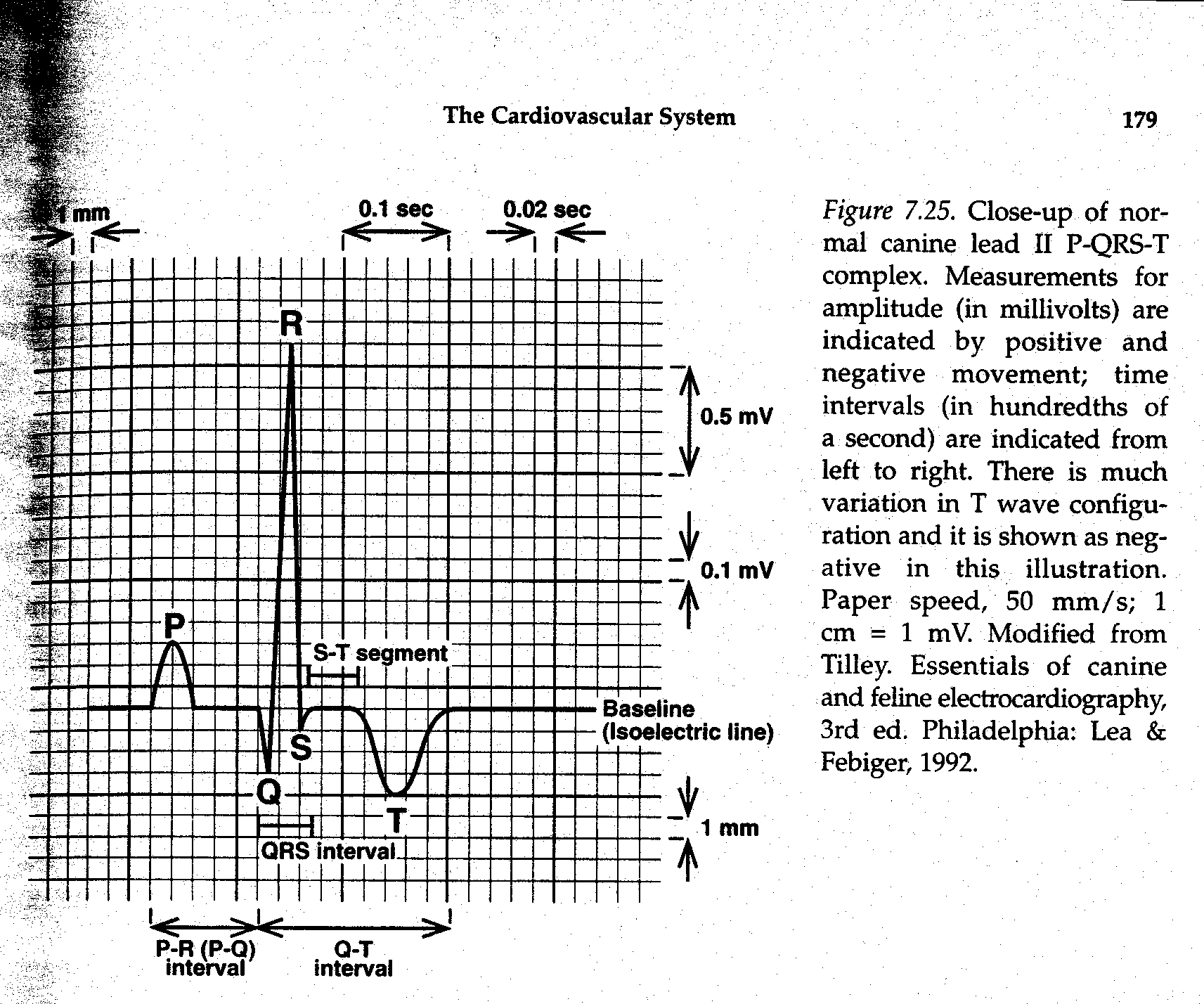
- P wave is associated with depolarization of atria, after
Depolarization, atrial contraction occurs
- QRS complex represents both positive (upward) and
Negative (downward) deflections associated with ventricular depolarization; ventricular contraction begins after depolarization of fibers.
- T wave represents ventricular repolarization
- When viewing an electrocardiogram, it can be seen that
deflections of the waves whether positive or negative occur
occur from a common line known as the isoelectric line.
- Heart Sounds
- Listening to the heart (cardiac auscultation) permits identification of sounds that accompany contraction of heart muscle and closure of the heart valves.
- Sounds are repeated for each cardiac cycle.
- First sound is ventricular contraction and A-V valves
- Second sound is ventricular relaxation and closure of semilunar valves.
- Abnormal heart sounds are called murmurs and are usually associated with valve disorders
- Heart Rate and Its Control
- Heart rate refers to frequency of cardiac cycles
- Usually measured as beats per minute
- Generally, smaller animals have higher heart rates
- Consequence of metabolic rate and oxygen consumption
- Larger surface area to body mass ratio in smaller animals
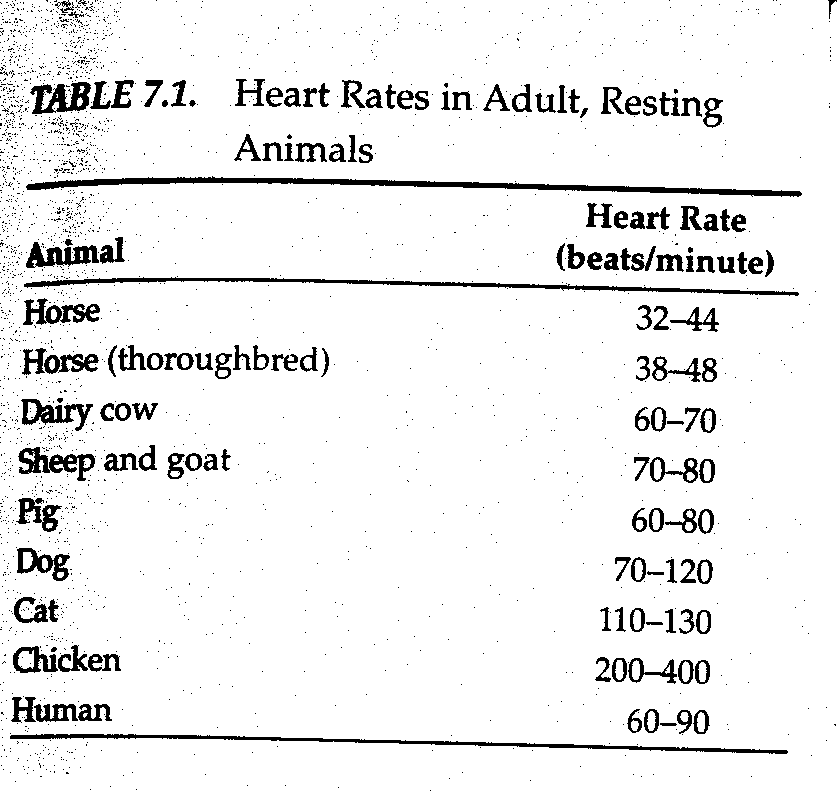
- Physical conditioning lowers heart rate as a result of cardiac
Hypertrophy.
- Young animals have a higher heart rate than adult animals
- higher metabolic rate
- Tonic vagal inhibition is less developed in young animals.
- Autonomic Nervous System regulates heart rate
- Sympathetic innervation occurs via efferent fibers from the stellate ganglia of the sympathetic trunk.
- Increases heart activities
- Parasympathetic innervation is supplied by fibers from the vagus nerves.
- Decreases heart activities
- Heart activities include rate of contraction, force of
Contraction, rate of impulse conduction and amount of coronary blood flow.
- Autoregulation of the heart rate also occurs
- Based on volume of blood received in atria
- Starling"s law of the heart
- The more the heart is filled during diastole the greater the volume pumped out.
- Reflexes
- Several important reflexes within the cardiovascular system assist in its regulation.
- In the arch of the aorta and where the carotid arteries branch to form the internal carotid thee are many receptors that respond to stretching of these vessels.
- These are called Baroreceptors because they respond to blood pressure.
- When the artery is stretched the receptors increase their firing rate.
- The impulses from the aorta are transmitted to the medulla by the vagus nerves
- The impulses from the carotids are transmitted to the medulla by the glossopharyngeal nerves
- Response of the medulla center is to decrease the blood pressure through parasympathetic stimulation of the heart and inhibition of the vasomotor center (dilating blood vessels).
- Bainbridge Reflex
- Receptors in right atrium stimulated by stretch
To increase heart activities

- Blood Pressure
- Greatest pressure develops within the aorta when the left ventricle contracts.
- High point of blood pressure is called systole.
- At peak of left ventricular contraction
- The lowest point is called diastole
- Occurs during left ventricular relaxation
- The term pulse pressure refers to the difference between the
Systolic and diastolic pressures.
- Mean pressure is the diastolic pressure and 1/3 of systolic
Pressure.
- Determines the average rate at which blood flows
Through the systemic circulation.
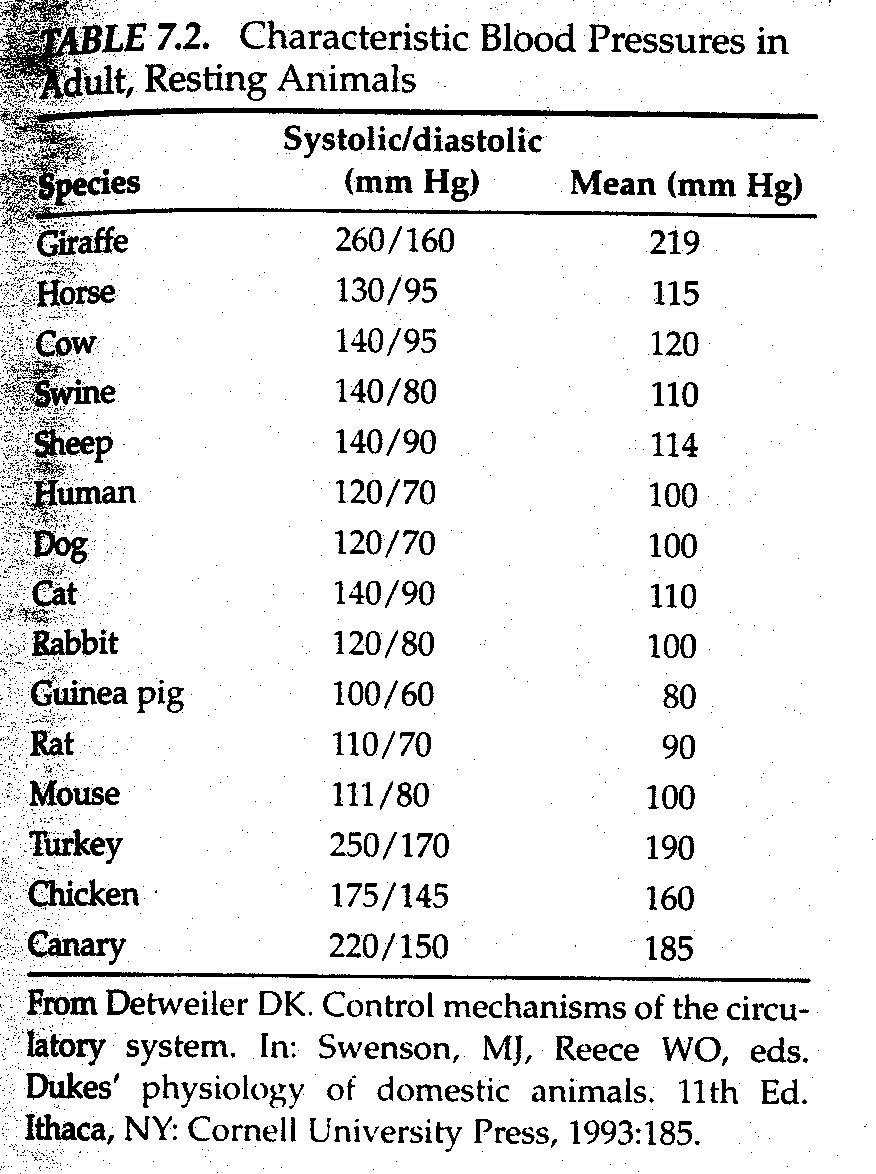
- Cardiac Output
- Defined as the amount of blood pumped by the heart in a unit period of time.
- Usually measured in milliliters or liters per minute.
- Divided among tissues according to need.
- Accomplished by regulating arteriole constriction or relaxation altering blood flow to vascular beds.
- Effect of Breathing
- When animals inhale air (inspire) a vacuum develops in the intrapleural space that is also transferred to the mediastinal space
- Thin-walled structures in mediastinal space can then expand
- Venae cavae, lymph vessels, esophagus
- Helpful for return of venous blood and lymph to the heart

- Circulation Time
- Time required for blood to return to the right atrium after it has been pumped from the left ventricle.
- Variable but approximately 40-60 seconds.
- Capillary dynamics
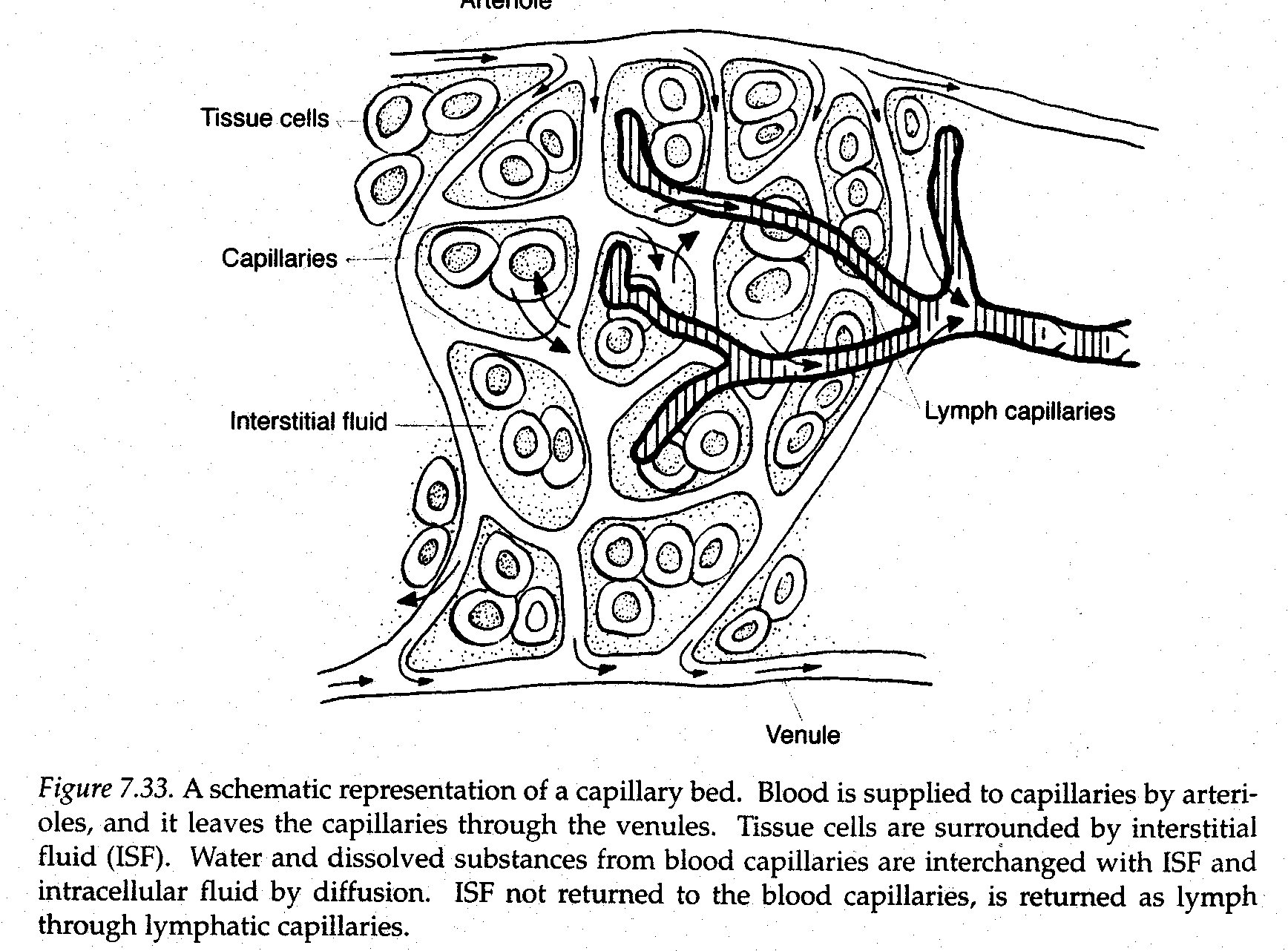
- Refers to physical factors associated with the exchange of fluid between the blood and interstitial fluid at the level of the capillaries.
- Two Types
- Diffusion of water and dissolved substances accounts for the greatest degree of interchange between capillaries and interstitial fluid.
- Bulk flow results from osmotic and hydrostatic pressure
differences between plasma and interstitial fluid.
- Volume of bulk flow into the interstitial space from
Plasma is usually balanced by amount returning to the capillaries from interstitial space.
- Mechanism of bulk flow
- capillary pressure
- hydrostatic pressure in capillary
- plasma colloidal osmotic pressure
- effective osmotic pressure of capillary
- Interstitial fluid pressure
- Hydrostatic pressure in the interstitial fluid
- interstitial fluid colloidal osmotic pressure
- effective osmotic pressure of the interstitial fluid
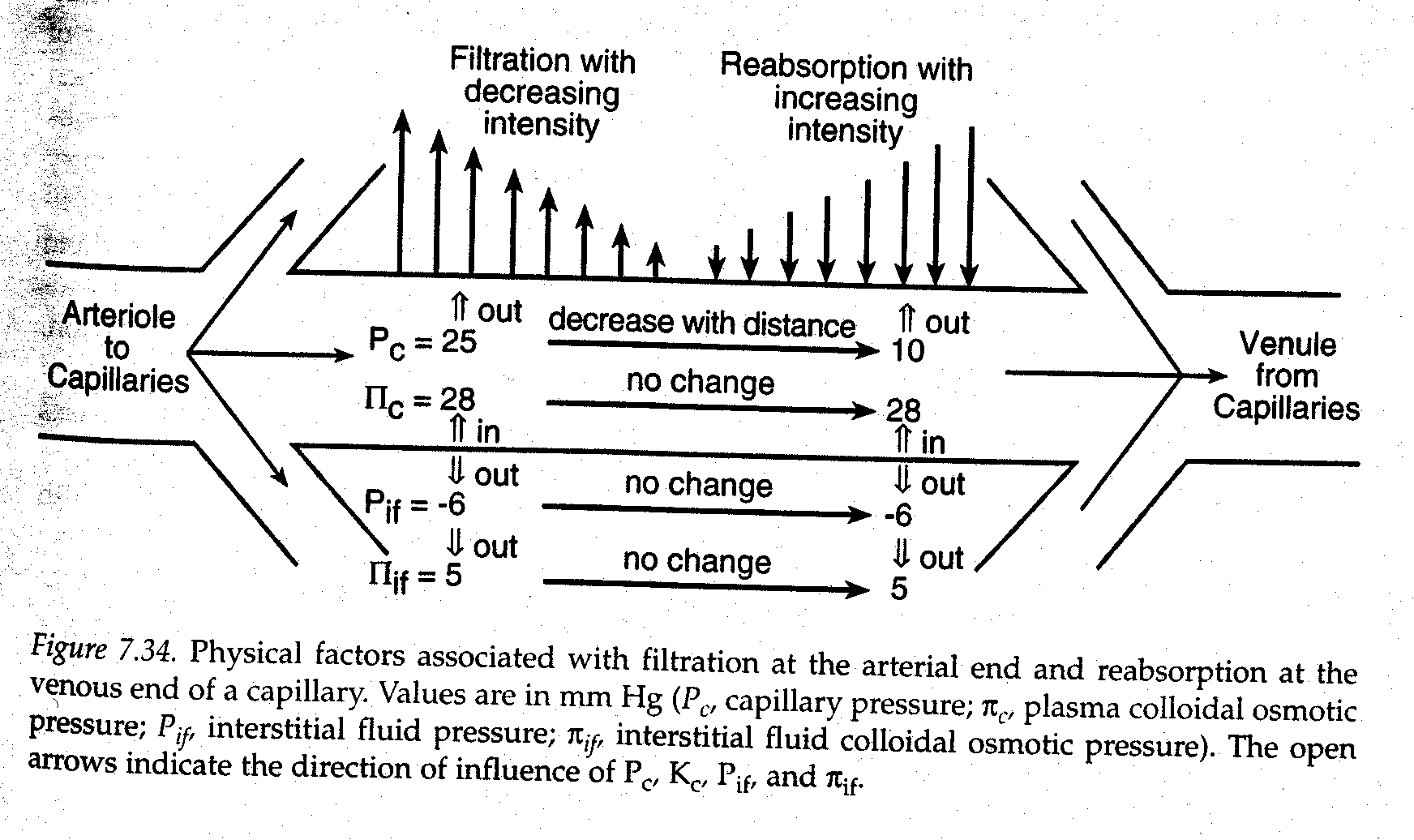
- Capillary imbalances
- imbalance of bulk flow due to
- blockage of venous drainage
- blockage of lymphatic drainage
- loss of protein from capillary to interstitial space
- depletion of blood protein through malnutrition
- Leads to edema or swollen tissue due to excess fluid in
The tissue.
